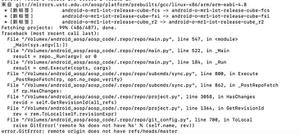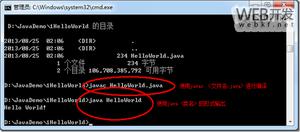hadoop源码_hdfs启动流程_2_DataNode

执行start-dfs.sh脚本后,集群是如何启动的?
本文阅读并注释了start-dfs脚本,以及datanode的启动主要流程流程源码。
DataNode 启动流程
脚本代码分析
start-dfs.sh中启动datanode的代码:
#---------------------------------------------------------# datanodes (using default workers file)
echo "Starting datanodes"
hadoop_uservar_su hdfs datanode "${HADOOP_HDFS_HOME}/bin/hdfs"
--workers
--config "${HADOOP_CONF_DIR}"
--daemon start
datanode ${dataStartOpt}
(( HADOOP_JUMBO_RETCOUNTER=HADOOP_JUMBO_RETCOUNTER + $? ))
去hadoop-hdfs > src > mian > bin > hdfs中查看namenode命令:
# 命令描述:用于启动DFS datanode hadoop_add_subcommand "datanode" daemon "run a DFS datanode"
# 命令处理程序
datanode)
HADOOP_SUBCMD_SUPPORTDAEMONIZATION="true"
HADOOP_SECURE_CLASSNAME="org.apache.hadoop.hdfs.server.datanode.SecureDataNodeStarter"
HADOOP_CLASSNAME="org.apache.hadoop.hdfs.server.datanode.DataNode"
hadoop_deprecate_envvar HADOOP_SECURE_DN_PID_DIR HADOOP_SECURE_PID_DIR
hadoop_deprecate_envvar HADOOP_SECURE_DN_LOG_DIR HADOOP_SECURE_LOG_DIR
;;
这里定位到了具体的处理类org.apache.hadoop.hdfs.server.datanode.SecureDataNodeStarter和org.apache.hadoop.hdfs.server.namenode.NameNode。
接着跟进脚本代码到hadoop-functions.sh中的hadoop_generic_java_subcmd_handler函数可以查看到以下代码:
# do the hard work of launching a daemon or just executing our interactive # 是启动守护进程还是仅仅执行交互
# java class
if [[ "${HADOOP_SUBCMD_SUPPORTDAEMONIZATION}" = true ]]; then
if [[ "${HADOOP_SUBCMD_SECURESERVICE}" = true ]]; then
hadoop_secure_daemon_handler
"${HADOOP_DAEMON_MODE}"
"${HADOOP_SUBCMD}"
"${HADOOP_SECURE_CLASSNAME}"
"${daemon_pidfile}"
"${daemon_outfile}"
"${priv_pidfile}"
"${priv_outfile}"
"${priv_errfile}"
"${HADOOP_SUBCMD_ARGS[@]}"
else
hadoop_daemon_handler
"${HADOOP_DAEMON_MODE}"
"${HADOOP_SUBCMD}"
"${HADOOP_CLASSNAME}"
"${daemon_pidfile}"
"${daemon_outfile}"
"${HADOOP_SUBCMD_ARGS[@]}"
fi
exit $?
else
hadoop_java_exec "${HADOOP_SUBCMD}" "${HADOOP_CLASSNAME}" "${HADOOP_SUBCMD_ARGS[@]}"
fi
这里需要分析一下最终走的是hadoop_secure_daemon_handler还是hadoop_daemon_handler。
在满足HADOOP_SUBCMD_SUPPORTDAEMONIZATION = true和HADOOP_SUBCMD_SECURESERVICE = true两个条件时才会进行安全模式启动。
HADOOP_SUBCMD_SUPPORTDAEMONIZATION在datanode的命令处理程序中会赋值:
# 在hdfs脚本中datanode)
HADOOP_SUBCMD_SUPPORTDAEMONIZATION="true"
HADOOP_SECURE_CLASSNAME="org.apache.hadoop.hdfs.server.datanode.SecureDataNodeStarter"
# ......
;;
HADOOP_SUBCMD_SECURESERVICE在hadoop-functions.sh脚本中定义的默认值为:
HADOOP_SUBCMD_SECURESERVICE=false在函数hadoop_generic_java_subcmd_handler(我们的脚本执行函数)中,有条件判断是否赋值为true:
## @description Handle subcommands from main program entries## @audience private
## @stability evolving
## @replaceable yes
function hadoop_generic_java_subcmd_handler
{
# ......
# The default/expected way to determine if a daemon is going to run in secure
# mode is defined by hadoop_detect_priv_subcmd. If this returns true
# then setup the secure user var and tell the world we"re in secure mode
if hadoop_detect_priv_subcmd "${HADOOP_SHELL_EXECNAME}" "${HADOOP_SUBCMD}"; then
HADOOP_SUBCMD_SECURESERVICE=true
# ......
进入hadoop_detect_priv_subcmd函数中:
## @description autodetect whether this is a priv subcmd## @description by whether or not a priv user var exists
## @description and if HADOOP_SECURE_CLASSNAME is defined
## @audience public
## @stability stable
## @replaceable yes
## @param command
## @param subcommand
## @return 1 = not priv
## @return 0 = priv
function hadoop_detect_priv_subcmd
{
declare program=$1
declare command=$2
#
if [[ -z "${HADOOP_SECURE_CLASSNAME}" ]]; then
hadoop_debug "No secure classname defined."
return 1
fi
uvar=$(hadoop_build_custom_subcmd_var "${program}" "${command}" SECURE_USER)
if [[ -z "${!uvar}" ]]; then
hadoop_debug "No secure user defined."
return 1
fi
return 0
}
可以看到需要HADOOP_SECURE_CLASSNAME,和两个传入参数HADOOP_SHELL_EXECNAME,HADOOP_SUBCMD都存在的情况下才会返回0(在shell脚本中if function; then 格式,function返回0即会执行then后的语句)。
HADOOP_SECURE_CLASSNAME参数与HADOOP_SUBCMD_SUPPORTDAEMONIZATION相同会在hdfs脚本中的datanode的命令处理程序中赋值。
HADOOP_SHELL_EXECNAME参数在hdfs脚本中会定义默认值:
# The name of the script being executed.HADOOP_SHELL_EXECNAME="hdfs"
HADOOP_SUBCMD参数在hdfs脚本中被定义为:HADOOP_SUBCMD=$1,即取自第二个参数,我们返回start-dfs.sh脚本中查看调用命令的完整语句如下:
#---------------------------------------------------------# datanodes (using default workers file)
echo "Starting datanodes"
hadoop_uservar_su hdfs datanode "${HADOOP_HDFS_HOME}/bin/hdfs"
--workers
--config "${HADOOP_CONF_DIR}"
--daemon start
datanode ${dataStartOpt}
(( HADOOP_JUMBO_RETCOUNTER=HADOOP_JUMBO_RETCOUNTER + $? ))
第二个参数为workers。
所以可以得出,正常执行start-dfs.sh脚本的情况下,会默认值行hadoop_secure_daemon_handler函数,即通过执行SecureDataNodeStarter类来以安全模式启动datanode。
SecureDataNodeStarter
官方注释翻译:
在安全集群中启动datanode的实用程序类,首先在主启动前获得特权资源并将它们交给datanode。
SecureDataNodeStarter实现了Daemon,作为一个守护进程,我们先看它实现自Daemon的方法:
@Override public void init(DaemonContext context) throws Exception {
System.err.println("Initializing secure datanode resources");
// 创建一个新的HdfsConfiguration对象,以确保选中hdfs-site.xml中的配置。
Configuration conf = new HdfsConfiguration();
// 存储常规datanode的命令行参数
args = context.getArguments();
// 初始化数据节点的特权资源(即特权端口)。
resources = getSecureResources(conf);
}
@Override
public void start() throws Exception {
System.err.println("Starting regular datanode initialization");
// 正常的初始化DataNode
DataNode.secureMain(args, resources);
}
@Override public void destroy() {}
@Override public void stop() throws Exception { /* Nothing to do */ }
静态变量
可以看到SecureDataNodeStarter主要作用就是获取配置信息并存储起来,然后正常的初始化DateNode时再作为参数传递。接下来看看除了命令行参数外都还初始化了哪些参数:
// 命令行参数 private String [] args;
private SecureResources resources;
// 在安全的环境中存储datanode操作所需的资源
public static class SecureResources {
// 是否启用sasl
private final boolean isSaslEnabled;
// rpc 端口是否为特权端口(端口号小于1024,不允许普通用户在其上运行服务器)
// 详见https://www.w3.org/Daemon/User/Installation/PrivilegedPorts.html
private final boolean isRpcPortPrivileged;
// http 端口是否为特权端口
private final boolean isHttpPortPrivileged;
// 监听dfs.datanode.address配置的端口的服务器套接字
private final ServerSocket streamingSocket;
// 监听dfs.datanode.http.address配置的端口的服务器套接字通道
private final ServerSocketChannel httpServerSocket;
public SecureResources(ServerSocket streamingSocket, ServerSocketChannel
httpServerSocket, boolean saslEnabled, boolean rpcPortPrivileged,
boolean httpPortPrivileged) {
this.streamingSocket = streamingSocket;
this.httpServerSocket = httpServerSocket;
this.isSaslEnabled = saslEnabled;
this.isRpcPortPrivileged = rpcPortPrivileged;
this.isHttpPortPrivileged = httpPortPrivileged;
}
// getter / setter .... 略
}
getSecureResources(conf)
接下来看init()中调用的方法getSecureResources(conf),看看SecureResources中的参数都是从哪获取的。
// 获取数据节点的特权资源(即特权端口)。 // 特权资源由RPC服务器的端口和HTTP(不是HTTPS)服务器的端口组成。
@VisibleForTesting
public static SecureResources getSecureResources(Configuration conf)
throws Exception {
// 获取http访问协议,HTTP_ONLY, HTTPS_ONLY, HTTP_AND_HTTPS
HttpConfig.Policy policy = DFSUtil.getHttpPolicy(conf);
// 尝试构建SaslPropertiesResolver,如果可以即为开启sasl
boolean isSaslEnabled =
DataTransferSaslUtil.getSaslPropertiesResolver(conf) != null;
boolean isRpcPrivileged;
boolean isHttpPrivileged = false;
System.err.println("isSaslEnabled:" + isSaslEnabled);
// 获取数据流到datanode的安全端口,创建IP套接字地址
// 会通过配置项dfs.datanode.address来创建,配置的默认值为:0.0.0.0:9866
InetSocketAddress streamingAddr = DataNode.getStreamingAddr(conf);
// 获取socket 写超时时间
// 配置项为:dfs.datanode.socket.write.timeout, 默认值为:8 * 60 秒
int socketWriteTimeout = conf.getInt(
DFSConfigKeys.DFS_DATANODE_SOCKET_WRITE_TIMEOUT_KEY,
HdfsConstants.WRITE_TIMEOUT);
// 获取请求的传入连接队列的最大长度。
// 配置项为ipc.server.listen.queue.size, 默认值为256
int backlogLength = conf.getInt(
CommonConfigurationKeysPublic.IPC_SERVER_LISTEN_QUEUE_SIZE_KEY,
CommonConfigurationKeysPublic.IPC_SERVER_LISTEN_QUEUE_SIZE_DEFAULT);
// 默认打开ServerSocketChannel进行datanode端口监听
ServerSocket ss = (socketWriteTimeout > 0) ?
ServerSocketChannel.open().socket() : new ServerSocket();
try {
// 绑定端口,设置请求的传入连接队列的最大长度
ss.bind(streamingAddr, backlogLength);
} catch (BindException e) {
BindException newBe = appendMessageToBindException(e,
streamingAddr.toString());
throw newBe;
}
// 检查是否绑定到了正确
if (ss.getLocalPort() != streamingAddr.getPort()) {
throw new RuntimeException(
"Unable to bind on specified streaming port in secure "
+ "context. Needed " + streamingAddr.getPort() + ", got "
+ ss.getLocalPort());
}
// 检查给定端口是否为特权端口。
// 在unix/linux系统中,小于1024的端口被视为特权端口。
// 对于其他操作系统,请谨慎使用此方法。
// 例如,Windows没有特权端口的概念。
// 但是,在Windows客户端上可以用来检查linux服务器的端口。
isRpcPrivileged = SecurityUtil.isPrivilegedPort(ss.getLocalPort());
System.err.println("Opened streaming server at " + streamingAddr);
// 为web服务器绑定端口。
// 该代码打算仅将HTTP服务器绑定到特权端口,因为如果服务器通过SSL进行通信,客户端可以使用证书对服务器进行身份验证。
final ServerSocketChannel httpChannel;
// 判断是否允许http访问
if (policy.isHttpEnabled()) {
httpChannel = ServerSocketChannel.open();
// 确定http服务器的有效地址
// 通过配置项dfs.datanode.http.address来生成,默认值为:0.0.0.0:9864
InetSocketAddress infoSocAddr = DataNode.getInfoAddr(conf);
try {
httpChannel.socket().bind(infoSocAddr);
} catch (BindException e) {
BindException newBe = appendMessageToBindException(e,
infoSocAddr.toString());
throw newBe;
}
InetSocketAddress localAddr = (InetSocketAddress) httpChannel.socket()
.getLocalSocketAddress();
// 校验httpChannel绑定的地址是否正确
if (localAddr.getPort() != infoSocAddr.getPort()) {
throw new RuntimeException("Unable to bind on specified info port in " +
"secure context. Needed " + infoSocAddr.getPort() + ", got " +
ss.getLocalPort());
}
System.err.println("Successfully obtained privileged resources (streaming port = "
+ ss + " ) (http listener port = " + localAddr.getPort() +")");
// 判断端口号是否为特权端口(小于1024)
isHttpPrivileged = SecurityUtil.isPrivilegedPort(localAddr.getPort());
System.err.println("Opened info server at " + infoSocAddr);
} else {
httpChannel = null;
}
// 将获取到的特权资源封装成SecureResources
return new SecureResources(ss, httpChannel, isSaslEnabled,
isRpcPrivileged, isHttpPrivileged);
}
至此,SecureDataNodeStarter类的init()方法结束。
继续看start()方法,可以看到就是正常的传入init()方法中初始化的配置。
@Override public void start() throws Exception {
System.err.println("Starting regular datanode initialization");
DataNode.secureMain(args, resources);
}
resources参数在datanode中的具体作用见datanode代码分析
DataNode
dataNode官方注释反应如下:
DataNode是一个类(和程序),它为DFS部署存储一组块。
单个部署可以有一个或多个datanode。
每个DataNode定期与单个NameNode通信。
它还会不时地与客户机代码和其他datanode通信。
datanode存储一系列命名块。
DataNode允许客户端代码读取这些块,或者写入新的块数据。
DataNode也可以响应来自它的NameNode的指令,删除块或从其他DataNode复制块。
DataNode只维护一个关键表:block->这个信息存储在本地磁盘上。
DataNode会在启动时以及之后的每隔一段时间向NameNode报告表的内容。
datanode一辈子都在无止境地要求NameNode做点什么。
NameNode不能直接连接到DataNode;NameNode只是从DataNode调用的函数中返回值。
datanode维护一个开放的服务器套接字,以便客户端代码或其他datanode可以读写数据。
这个服务器的主机/端口报告给NameNode,然后NameNode将该信息发送给可能感兴趣的客户端或其他datanode。
静态代码块
dataNode的静态代码块与NameNode中相同,用于加载默认的配置文件
static{ HdfsConfiguration.init();
}
mian方法
由上文中SecureDataNodeStarter#start方法可以看到,默认调用的是DataNode#secureMain方法来启动datanode。而默认的main方法也是调用DataNode#secureMain,接下来具体看看main和secureMain方法的代码:
public static void main(String args[]) { // 分析传入的参数,是否是帮助参数
if (DFSUtil.parseHelpArgument(args, DataNode.USAGE, System.out, true)) {
System.exit(0);
}
// 调用
secureMain(args, null);
}
public static void secureMain(String args[], SecureResources resources) { int errorCode = 0;
try {
//打印一些启动日志信息
StringUtils.startupShutdownMessage(DataNode.class, args, LOG);
// 创建datanode
DataNode datanode = createDataNode(args, null, resources);
if (datanode != null) {
// join各种线程,等待执行结束
// blockPoolManager.joinAll(); -> BPOfferService#jion -> BPServiceActor#join
// BPServiceActor: 每个活动或备用namenode要执行的线程:
// 预注册与namenode握手, 然后登记, 定期发送心跳到namenode, 处理从namenode接收到的命令
datanode.join();
} else {
errorCode = 1;
}
} catch (Throwable e) {
LOG.error("Exception in secureMain", e);
terminate(1, e);
} finally {
// We need to terminate the process here because either shutdown was called
// or some disk related conditions like volumes tolerated or volumes required
// condition was not met. Also, In secure mode, control will go to Jsvc
// and Datanode process hangs if it does not exit.
LOG.warn("Exiting Datanode");
terminate(errorCode);
}
}
DataNode#createDataNode
实例化&启动一个datanode守护进程并等待它完成。
@VisibleForTesting @InterfaceAudience.Private
public static DataNode createDataNode(String args[], Configuration conf,
SecureResources resources) throws IOException {
// 初始化datanode
DataNode dn = instantiateDataNode(args, conf, resources);
if (dn != null) {
// 启动datanode进程
dn.runDatanodeDaemon();
}
return dn;
}
先来看看初始化datanode的流程:
DataNode#instantiateDataNode
// 实例化单个datanode对象及其安全资源。这必须通过随后调用datanodedaemon()来运行。public static DataNode instantiateDataNode(String args [], Configuration conf,
SecureResources resources) throws IOException {
if (conf == null)
conf = new HdfsConfiguration();
if (args != null) {
// 解析通用hadoop选项
GenericOptionsParser hParser = new GenericOptionsParser(conf, args);
args = hParser.getRemainingArgs();
}
// 解析和验证命令行参数并设置配置参数。
if (!parseArguments(args, conf)) {
printUsage(System.err);
return null;
}
// 根据配置dfs.datanode.data.dir 获取实际的存储路径集合
// StorageLocation: 封装描述存储目录的URI和存储介质。如果没有指定存储介质,则假定默认存储介质为DISK。
// 详细的关于获取存储目录的解析看这篇博文: https://blog.csdn.net/Androidlushangderen/article/details/51105876
Collection<StorageLocation> dataLocations = getStorageLocations(conf);
// UserGroupInformation: Hadoop的用户和组信息。
// 该类封装了一个JAAS Subject,并提供了确定用户用户名和组的方法。
// 它同时支持Windows、Unix和Kerberos登录模块。
// UserGroupInformation#setConfiguration: 设置UGI的静态配置。特别是设置安全身份验证机制和组查找服务。
UserGroupInformation.setConfiguration(conf);
// 作为config中指定的主体登录。将用户的Kerberos主体名中的$host替换为主机名。 如果是非安全模式-返回。
SecurityUtil.login(conf, DFS_DATANODE_KEYTAB_FILE_KEY,
DFS_DATANODE_KERBEROS_PRINCIPAL_KEY, getHostName(conf));
// 创建DataNode实例
return makeInstance(dataLocations, conf, resources);
}
DataNode#makeInstance
// 在确保可以创建至少一个给定的数据目录(以及它们的父目录,如果需要的话)之后,创建DataNode实例。static DataNode makeInstance(Collection<StorageLocation> dataDirs,
Configuration conf, SecureResources resources) throws IOException {
List<StorageLocation> locations;
// StorageLocationChecker: 在DataNode启动期间封装存储位置检查的实用程序类。其中一些代码是从DataNode类中提取的。
StorageLocationChecker storageLocationChecker =
new StorageLocationChecker(conf, new Timer());
try {
// 启动对提供的存储卷的检查,并返回运行正常的卷列表。
// 为了与现有单元测试兼容,storagellocations将按照与输入相同的顺序返回。
locations = storageLocationChecker.check(conf, dataDirs);
} catch (InterruptedException ie) {
throw new IOException("Failed to instantiate DataNode", ie);
}
// 初始化度量系统
DefaultMetricsSystem.initialize("DataNode");
// 检查数据目录的权限
assert locations.size() > 0 : "number of data directories should be > 0";
// 创建DataNode
return new DataNode(conf, locations, storageLocationChecker, resources);
}
StorageLocationChecker#check
来具体看一下都做了哪些检查:
// 启动对提供的存储卷的检查,并返回运行正常的卷列表。 // 为了与现有单元测试兼容,storagellocations将按照与输入相同的顺序返回。
// 返回运行正常的卷列表。如果没有正常运行的卷,则返回一个空列表。
public List<StorageLocation> check(
final Configuration conf,
final Collection<StorageLocation> dataDirs)
throws InterruptedException, IOException {
final HashMap<StorageLocation, Boolean> goodLocations =
new LinkedHashMap<>();
final Set<StorageLocation> failedLocations = new HashSet<>();
final Map<StorageLocation, ListenableFuture<VolumeCheckResult>> futures =
Maps.newHashMap();
// 获取本地文件系统。如果没有就创建一个新的
final LocalFileSystem localFS = FileSystem.getLocal(conf);
final CheckContext context = new CheckContext(localFS, expectedPermission);
// 在所有storagelocation上启动并行磁盘检查操作。
for (StorageLocation location : dataDirs) {
goodLocations.put(location, true);
// 对给定的Checkable安排异步检查。如果检查计划成功,则返回ListenableFuture。
Optional<ListenableFuture<VolumeCheckResult>> olf =
delegateChecker.schedule(location, context);
if (olf.isPresent()) {
futures.put(location, olf.get());
}
}
if (maxVolumeFailuresTolerated >= dataDirs.size()) {
throw new HadoopIllegalArgumentException("Invalid value configured for "
+ DFS_DATANODE_FAILED_VOLUMES_TOLERATED_KEY + " - "
+ maxVolumeFailuresTolerated + ". Value configured is >= "
+ "to the number of configured volumes (" + dataDirs.size() + ").");
}
final long checkStartTimeMs = timer.monotonicNow();
// Retrieve the results of the disk checks.
// 检索磁盘,检查磁盘状态是否健康
for (Map.Entry<StorageLocation,
ListenableFuture<VolumeCheckResult>> entry : futures.entrySet()) {
// Determine how much time we can allow for this check to complete.
// The cumulative wait time cannot exceed maxAllowedTimeForCheck.
final long waitSoFarMs = (timer.monotonicNow() - checkStartTimeMs);
final long timeLeftMs = Math.max(0,
maxAllowedTimeForCheckMs - waitSoFarMs);
final StorageLocation location = entry.getKey();
try {
final VolumeCheckResult result =
entry.getValue().get(timeLeftMs, TimeUnit.MILLISECONDS);
switch (result) {
case HEALTHY:
break;
case DEGRADED:
LOG.warn("StorageLocation {} appears to be degraded.", location);
break;
case FAILED:
LOG.warn("StorageLocation {} detected as failed.", location);
failedLocations.add(location);
goodLocations.remove(location);
break;
default:
LOG.error("Unexpected health check result {} for StorageLocation {}",
result, location);
}
} catch (ExecutionException|TimeoutException e) {
LOG.warn("Exception checking StorageLocation " + location,
e.getCause());
failedLocations.add(location);
goodLocations.remove(location);
}
}
if (maxVolumeFailuresTolerated == DataNode.MAX_VOLUME_FAILURE_TOLERATED_LIMIT) {
if (dataDirs.size() == failedLocations.size()) {
throw new DiskErrorException("Too many failed volumes - "
+ "current valid volumes: " + goodLocations.size()
+ ", volumes configured: " + dataDirs.size()
+ ", volumes failed: " + failedLocations.size()
+ ", volume failures tolerated: " + maxVolumeFailuresTolerated);
}
} else {
if (failedLocations.size() > maxVolumeFailuresTolerated) {
throw new DiskErrorException("Too many failed volumes - "
+ "current valid volumes: " + goodLocations.size()
+ ", volumes configured: " + dataDirs.size()
+ ", volumes failed: " + failedLocations.size()
+ ", volume failures tolerated: " + maxVolumeFailuresTolerated);
}
}
if (goodLocations.size() == 0) {
throw new DiskErrorException("All directories in "
+ DFS_DATANODE_DATA_DIR_KEY + " are invalid: "
+ failedLocations);
}
return new ArrayList<>(goodLocations.keySet());
}
DataNode构造方法
// 给定一个配置、一个datadir数组和一个namenode代理,创建DataNode。 DataNode(final Configuration conf,
final List<StorageLocation> dataDirs,
final StorageLocationChecker storageLocationChecker,
final SecureResources resources) throws IOException {
// 将配置文件赋值到父类的静态变量中
super(conf);
// 初始化Tracer,与NameNode中此处相比,仅传入参数有区别
this.tracer = createTracer(conf);
// TracerConfigurationManager类提供了通过RPC协议在运行时管理跟踪器配置的函数。
this.tracerConfigurationManager =
new TracerConfigurationManager(DATANODE_HTRACE_PREFIX, conf);
// FileIoProvider这个类抽象出DataNode执行的各种文件IO操作,
// 并在每个文件IO之前和之后调用概要分析(用于收集统计数据)和故障注入(用于测试)事件钩子。
// 通过DFSConfigKeys启用剖析和/或错误注入事件钩子,可以将行为注入到这些事件中。
this.fileIoProvider = new FileIoProvider(conf, this);
// 初始化卷扫描,BlockScanner负责管理所有的VolumeScanner
this.blockScanner = new BlockScanner(this);
// 初始化各种配置参数
this.lastDiskErrorCheck = 0;
this.maxNumberOfBlocksToLog = conf.getLong(DFS_MAX_NUM_BLOCKS_TO_LOG_KEY,
DFS_MAX_NUM_BLOCKS_TO_LOG_DEFAULT);
this.usersWithLocalPathAccess = Arrays.asList(
conf.getTrimmedStrings(DFSConfigKeys.DFS_BLOCK_LOCAL_PATH_ACCESS_USER_KEY));
this.connectToDnViaHostname = conf.getBoolean(
DFSConfigKeys.DFS_DATANODE_USE_DN_HOSTNAME,
DFSConfigKeys.DFS_DATANODE_USE_DN_HOSTNAME_DEFAULT);
this.supergroup = conf.get(DFSConfigKeys.DFS_PERMISSIONS_SUPERUSERGROUP_KEY,
DFSConfigKeys.DFS_PERMISSIONS_SUPERUSERGROUP_DEFAULT);
this.isPermissionEnabled = conf.getBoolean(
DFSConfigKeys.DFS_PERMISSIONS_ENABLED_KEY,
DFSConfigKeys.DFS_PERMISSIONS_ENABLED_DEFAULT);
this.pipelineSupportECN = conf.getBoolean(
DFSConfigKeys.DFS_PIPELINE_ECN_ENABLED,
DFSConfigKeys.DFS_PIPELINE_ECN_ENABLED_DEFAULT);
confVersion = "core-" +
conf.get("hadoop.common.configuration.version", "UNSPECIFIED") +
",hdfs-" +
conf.get("hadoop.hdfs.configuration.version", "UNSPECIFIED");
// DatasetVolumeChecker: 对FsDatasetSpi的每个卷封装运行磁盘检查的类,并允许检索失败卷的列表。
// 这分离了最初跨DataNode、FsDatasetImpl和FsVolumeList实现的行为。
this.volumeChecker = new DatasetVolumeChecker(conf, new Timer());
// 创建了个ExecutorService,用于执行dataTransfer任务
// HadoopExecutors:ExecutorService、ScheduledExecutorService实例的工厂方法。这些执行器服务实例提供了额外的功能(例如记录未捕获的异常)。
// DataTransfer:是DataNode的内部类,用于传输一个数据块。这个类将一条数据发送到另一个DataNode。
this.xferService =
HadoopExecutors.newCachedThreadPool(new Daemon.DaemonFactory());
// Determine whether we should try to pass file descriptors to clients.
// 确定是否应该尝试将文件描述符传递给客户端。
if (conf.getBoolean(HdfsClientConfigKeys.Read.ShortCircuit.KEY,
HdfsClientConfigKeys.Read.ShortCircuit.DEFAULT)) {
String reason = DomainSocket.getLoadingFailureReason();
if (reason != null) {
LOG.warn("File descriptor passing is disabled because {}", reason);
this.fileDescriptorPassingDisabledReason = reason;
} else {
LOG.info("File descriptor passing is enabled.");
this.fileDescriptorPassingDisabledReason = null;
}
} else {
this.fileDescriptorPassingDisabledReason =
"File descriptor passing was not configured.";
LOG.debug(this.fileDescriptorPassingDisabledReason);
}
// 获取socket工厂,配置项为:hadoop.rpc.socket.factory.class.default,
// 默认为:org.apache.hadoop.net.StandardSocketFactory
this.socketFactory = NetUtils.getDefaultSocketFactory(conf);
try {
// 获取本datanode的主机名
hostName = getHostName(conf);
LOG.info("Configured hostname is {}", hostName);
// 启动datanode
startDataNode(dataDirs, resources);
} catch (IOException ie) {
shutdown();
throw ie;
}
final int dncCacheMaxSize =
conf.getInt(DFS_DATANODE_NETWORK_COUNTS_CACHE_MAX_SIZE_KEY,
DFS_DATANODE_NETWORK_COUNTS_CACHE_MAX_SIZE_DEFAULT) ;
datanodeNetworkCounts =
CacheBuilder.newBuilder()
.maximumSize(dncCacheMaxSize)
.build(new CacheLoader<String, Map<String, Long>>() {
@Override
public Map<String, Long> load(String key) throws Exception {
final Map<String, Long> ret = new HashMap<String, Long>();
ret.put("networkErrors", 0L);
return ret;
}
});
initOOBTimeout();
this.storageLocationChecker = storageLocationChecker;
}
DataNode#startDataNode
// 此方法使用指定的conf启动数据节点,如果设置了conf的config_property_simulation属性,则创建一个模拟的基于存储的数据节点void startDataNode(List<StorageLocation> dataDirectories,
SecureResources resources
) throws IOException {
// settings global for all BPs in the Data Node
this.secureResources = resources;
synchronized (this) {
this.dataDirs = dataDirectories;
}
// DNConf: 一个简单的类,封装了DataNode在启动时加载的所有配置。
this.dnConf = new DNConf(this);
// 检查secure模式下的配置
checkSecureConfig(dnConf, getConf(), resources);
// 检查DataNode给缓存使用的最大内存量是否在正常范围
if (dnConf.maxLockedMemory > 0) {
if (!NativeIO.POSIX.getCacheManipulator().verifyCanMlock()) {
throw new RuntimeException(String.format(
"Cannot start datanode because the configured max locked memory" +
" size (%s) is greater than zero and native code is not available.",
DFS_DATANODE_MAX_LOCKED_MEMORY_KEY));
}
if (Path.WINDOWS) {
NativeIO.Windows.extendWorkingSetSize(dnConf.maxLockedMemory);
} else {
long ulimit = NativeIO.POSIX.getCacheManipulator().getMemlockLimit();
if (dnConf.maxLockedMemory > ulimit) {
throw new RuntimeException(String.format(
"Cannot start datanode because the configured max locked memory" +
" size (%s) of %d bytes is more than the datanode"s available" +
" RLIMIT_MEMLOCK ulimit of %d bytes.",
DFS_DATANODE_MAX_LOCKED_MEMORY_KEY,
dnConf.maxLockedMemory,
ulimit));
}
}
}
LOG.info("Starting DataNode with maxLockedMemory = {}",
dnConf.maxLockedMemory);
int volFailuresTolerated = dnConf.getVolFailuresTolerated();
int volsConfigured = dnConf.getVolsConfigured();
if (volFailuresTolerated < MAX_VOLUME_FAILURE_TOLERATED_LIMIT
|| volFailuresTolerated >= volsConfigured) {
throw new HadoopIllegalArgumentException("Invalid value configured for "
+ "dfs.datanode.failed.volumes.tolerated - " + volFailuresTolerated
+ ". Value configured is either less than -1 or >= "
+ "to the number of configured volumes (" + volsConfigured + ").");
}
// 初始化DataStorage:数据存储信息文件。
// 本地存储信息存储在一个单独的文件VERSION中。
// 包含节点类型、存储布局版本、命名空间id、fs状态创建时间。
// 本地存储可以位于多个目录中。每个目录应该包含与其他目录相同的VERSION文件。
// 在启动期间Hadoop服务器(name-node和data-node)从它们读取本地存储信息。
// 服务器在运行时对每个存储目录持有一个锁,这样其他节点就不能在启动时共享相同的存储。
// 当服务器停止(正常或异常)时,锁将被释放。
storage = new DataStorage();
// global DN settings
// 注册JMX,JMX介绍看着篇: https://www.liaoxuefeng.com/wiki/1252599548343744/1282385687609378
registerMXBean();
// 初始化DataXceiver(流式通信),DataNode runDatanodeDaemon()中启动
initDataXceiver();
// 启动InfoServer
startInfoServer();
// 启动JVMPauseMonitor(反向监控JVM情况,可通过JMX查询)
pauseMonitor = new JvmPauseMonitor();
pauseMonitor.init(getConf());
pauseMonitor.start();
// BlockPoolTokenSecretManager is required to create ipc server.
// BlockPoolTokenSecretManager: 管理每个块池的BlockTokenSecretManager。将给定块池Id的请求路由到相应的BlockTokenSecretManager
this.blockPoolTokenSecretManager = new BlockPoolTokenSecretManager();
// Login is done by now. Set the DN user name.
dnUserName = UserGroupInformation.getCurrentUser().getUserName();
LOG.info("dnUserName = {}", dnUserName);
LOG.info("supergroup = {}", supergroup);
// 初始化IpcServer(RPC通信),DataNode-runDatanodeDaemon()中启动
initIpcServer();
metrics = DataNodeMetrics.create(getConf(), getDisplayName());
peerMetrics = dnConf.peerStatsEnabled ?
DataNodePeerMetrics.create(getDisplayName(), getConf()) : null;
metrics.getJvmMetrics().setPauseMonitor(pauseMonitor);
ecWorker = new ErasureCodingWorker(getConf(), this);
blockRecoveryWorker = new BlockRecoveryWorker(this);
// 按照namespace(nameservice)、namenode的结构进行初始化
blockPoolManager = new BlockPoolManager(this);
// 心跳管理
blockPoolManager.refreshNamenodes(getConf());
// Create the ReadaheadPool from the DataNode context so we can
// exit without having to explicitly shutdown its thread pool.
readaheadPool = ReadaheadPool.getInstance();
saslClient = new SaslDataTransferClient(dnConf.getConf(),
dnConf.saslPropsResolver, dnConf.trustedChannelResolver);
saslServer = new SaslDataTransferServer(dnConf, blockPoolTokenSecretManager);
startMetricsLogger();
if (dnConf.diskStatsEnabled) {
diskMetrics = new DataNodeDiskMetrics(this,
dnConf.outliersReportIntervalMs);
}
}
DataNode#checkSecureConfig
先看看checkSecureConfig(dnConf, getConf(), resources);方法具体检测了什么,又如何使用了传入的resource参数:
// 如果启用了安全性,检查DataNode是否有安全配置。有两种可能的配置是安全的:// 1. 服务器已经通过SecureDataNodeStarter绑定到RPC和HTTP的特权端口。
// 2. 该配置对HTTP服务器的DataTransferProtocol和HTTPS(无明文HTTP)启用SASL。
// SASL握手保证了RPC服务器在客户端传输一个秘密(比如块访问令牌)之前的身份验证。
// 类似地,SSL在客户端传输秘密(比如委托令牌)之前保证HTTP服务器的身份验证。
// 不可能同时在DataTransferProtocol上运行特权端口和SASL。
// 为了向后兼容,连接逻辑必须检查目标端口是否为特权端口,如果是,跳过SASL握手。
private static void checkSecureConfig(DNConf dnConf, Configuration conf,
SecureResources resources) throws RuntimeException {
if (!UserGroupInformation.isSecurityEnabled()) {
return;
}
// Abort out of inconsistent state if Kerberos is enabled but block access tokens are not enabled.
// 如果启用了Kerberos,但没有启用块访问令牌,则退出不一致状态
boolean isEnabled = conf.getBoolean(
DFSConfigKeys.DFS_BLOCK_ACCESS_TOKEN_ENABLE_KEY,
DFSConfigKeys.DFS_BLOCK_ACCESS_TOKEN_ENABLE_DEFAULT);
if (!isEnabled) {
String errMessage = "Security is enabled but block access tokens " +
"(via " + DFSConfigKeys.DFS_BLOCK_ACCESS_TOKEN_ENABLE_KEY + ") " +
"aren"t enabled. This may cause issues " +
"when clients attempt to connect to a DataNode. Aborting DataNode";
throw new RuntimeException(errMessage);
}
// 如果配置设置为跳过安全集群中正确端口配置的检查,则返回true。这只用于开发测试。
if (dnConf.getIgnoreSecurePortsForTesting()) {
return;
}
if (resources != null) {
// 特权端口或配置HTTPS_ONLY
final boolean httpSecured = resources.isHttpPortPrivileged()
|| DFSUtil.getHttpPolicy(conf) == HttpConfig.Policy.HTTPS_ONLY;
// 特权端口或配置开启sasl
final boolean rpcSecured = resources.isRpcPortPrivileged()
|| resources.isSaslEnabled();
// Allow secure DataNode to startup if:
// 1. Http is secure.
// 2. Rpc is secure
if (rpcSecured && httpSecured) {
return;
}
} else {
// Handle cases when SecureDataNodeStarter#getSecureResources is not invoked
// 处理SecureDataNodeStarter#getSecureResources未被调用的情况
SaslPropertiesResolver saslPropsResolver = dnConf.getSaslPropsResolver();
if (saslPropsResolver != null &&
DFSUtil.getHttpPolicy(conf) == HttpConfig.Policy.HTTPS_ONLY) {
return;
}
}
throw new RuntimeException("Cannot start secure DataNode due to incorrect "
+ "config. See https://cwiki.apache.org/confluence/display/HADOOP/"
+ "Secure+DataNode for details.");
}
DataNode#initDataXceiver
private void initDataXceiver() throws IOException { // find free port or use privileged port provided
TcpPeerServer tcpPeerServer;
if (secureResources != null) {
// 通过secureResources中的streamingSocket创建TcpPeerServer
tcpPeerServer = new TcpPeerServer(secureResources);
} else {
int backlogLength = getConf().getInt(
CommonConfigurationKeysPublic.IPC_SERVER_LISTEN_QUEUE_SIZE_KEY,
CommonConfigurationKeysPublic.IPC_SERVER_LISTEN_QUEUE_SIZE_DEFAULT);
tcpPeerServer = new TcpPeerServer(dnConf.socketWriteTimeout,
DataNode.getStreamingAddr(getConf()), backlogLength);
}
if (dnConf.getTransferSocketRecvBufferSize() > 0) {
tcpPeerServer.setReceiveBufferSize(
dnConf.getTransferSocketRecvBufferSize());
}
streamingAddr = tcpPeerServer.getStreamingAddr();
LOG.info("Opened streaming server at {}", streamingAddr);
// 构造一个新的线程组。这个新组的父线程组是当前运行线程的线程组。
this.threadGroup = new ThreadGroup("dataXceiverServer");
// DataXceiverServer: 用于接收/发送数据块的服务器。
// 创建它是为了侦听来自客户端或其他datanode的请求。这个小服务器不使用Hadoop IPC机制。
xserver = new DataXceiverServer(tcpPeerServer, getConf(), this);
// DN用来接收客户端和其他DN发送过来的数据服务,并为每个请求创建一个工作线程以进行请求的响应
this.dataXceiverServer = new Daemon(threadGroup, xserver);
this.threadGroup.setDaemon(true); // auto destroy when empty
if (getConf().getBoolean(
HdfsClientConfigKeys.Read.ShortCircuit.KEY,
HdfsClientConfigKeys.Read.ShortCircuit.DEFAULT) ||
getConf().getBoolean(
HdfsClientConfigKeys.DFS_CLIENT_DOMAIN_SOCKET_DATA_TRAFFIC,
HdfsClientConfigKeys
.DFS_CLIENT_DOMAIN_SOCKET_DATA_TRAFFIC_DEFAULT)) {
DomainPeerServer domainPeerServer =
getDomainPeerServer(getConf(), streamingAddr.getPort());
if (domainPeerServer != null) {
this.localDataXceiverServer = new Daemon(threadGroup,
new DataXceiverServer(domainPeerServer, getConf(), this));
LOG.info("Listening on UNIX domain socket: {}",
domainPeerServer.getBindPath());
}
}
this.shortCircuitRegistry = new ShortCircuitRegistry(getConf());
}
DataNode#createDataNode
接着回到DataNode#createDataNode方法中,继续看启动datanode的流程dn.runDatanodeDaemon();:
public void runDatanodeDaemon() throws IOException { blockPoolManager.startAll();
// start dataXceiveServer
dataXceiverServer.start();
if (localDataXceiverServer != null) {
localDataXceiverServer.start();
}
ipcServer.setTracer(tracer);
ipcServer.start();
startPlugins(getConf());
}
以上是 hadoop源码_hdfs启动流程_2_DataNode 的全部内容, 来源链接: utcz.com/z/535764.html







